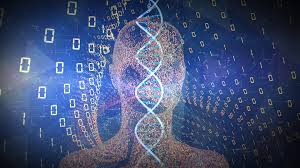Source: ajmc.com
Artificial intelligence and deep learning are beginning to make a major impact in cancer care, but a number of challenges remain before the full potential of the new technologies can be realized, according to a new study.
Writing in Cancer Communications, authors from China’s Tianjin Medical University and Tsinghua University, say artificial intelligence is increasingly being used to help understand tumor pathology. However, the investigators also concede that some pathologists, clinicians, and patients remain skeptical about the technology, as are regulators and payers.
Corresponding author Xiangchun Li, PhD, and colleagues say the analysis of pathology has grown in recent decades to become superior to human expertise and even machine-learning (ML). Newer technology, called deep learning (DL), is based on hard data, rather than subjective factors. Li says DL is highly accurate, outperforming the older methods.
“The application of AI in pathology helps to overcome the limitations of subjective visual assessment from pathologists and integrate multiple measurements for precision tumor treatment,” Li and colleagues write.
The authors go on to highlight a number of ways they say AI and DL can improve cancer care. One of the most important ways, they say, is in tumor diagnosis. The authors write that DL can help distinguish tumors from other types of lesions, and also distinguish between malignant and benign tumors.
Models have also been developed that Li and colleagues believe can already or will soon be able to help clinicians subtype, grade, and stage cancers. The technologies also have the potential to detect biomarkers and genetic changes in tumors, the authors write.
Turning to challenges, the investigators say the algorithms underpinning AI and DL technologies need to be validated on larger scales and adapted as new data become available.
“Building comprehensive quality control and standardization tools, data share and validation with multi‐institutional data can increase the generalizability and robustness of the AI algorithms,” they write. “In addition, AI algorithms need to be continually validated and corrected by the diagnosis of expert pathologists.”
Another problem is that the images used by these systems tend to be massive files. Storing and sharing such files can be a challenge on existing information technology infrastructure, though they argue that newer advances will ease that problem.
“These challenges would be addressed in the foreseeable future brought by improvements in information technology such as universal adoption of 5G,” Li and colleagues say.
The one problem that technology itself cannot solve is the sentiment of medical professionals and patients. For one thing, it can be difficult to gain the confidence of physicians when many clinicians do not fully understand how the AI and DL technology work. Improvements also need to be made so that the output of such technologies is easily interpreted by clinicians, and is standardized from system to system.
However, even if clinicians are on board, that does not necessarily mean that payers will reimburse hospitals for the use of the technology, Li and colleagues say.
“At present, there are no dedicated procedure codes for the use of AI in digital pathology with diagnostic or prognostic intent,” the authors write. “AI‐
based tools probably need to be approved by [Food and Drug Administration] before they get the new procedure codes and are reimbursable.”
In summary, Li and co-authors say the technology is proving itself as a meaningful tool in cancer care, but its proponents will need to work carefully to gain the scientific rigor and clinician comfort that will be necessary for wide deployment of the tools.
“People will have more confidence in AI algorithms after they are validated using multi‐center data and have increased interpretability,” they say.
